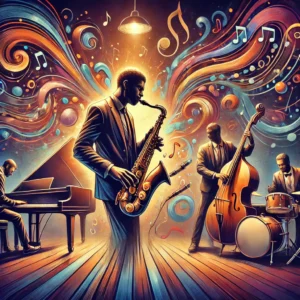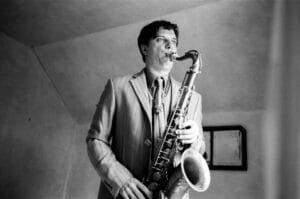Have you ever wondered what happens when contemporary jazz meets an experimental edge and youthful energy? Enter BADBADNOTGOOD, a group that has not only carved out a unique space in the jazz world but has also managed to captivate listeners across multiple genres.

















Who is BADBADNOTGOOD?
BADBADNOTGOOD is a Canadian music group from Toronto, known for their eclectic blend of jazz, hip-hop, electronic, and alternative music. Formed in 2010, the group initially gained attention for their jazz covers of hip-hop tracks. The original members, Matthew Tavares (keys), Chester Hansen (bass), and Alexander Sowinski (drums), were later joined by Leland Whitty (saxophone). These young musicians were all graduates of Humber College’s jazz program, and their musical backgrounds clearly shine through in their intricate, genre-blending compositions.
Early Beginnings
It’s always fascinating to consider how a group came together. The members met while studying at Humber College in Toronto, bonding over their mutual admiration for hip-hop and jazz. This foundational connection set the stage for their initial experimentations. They started uploading covers of songs by artists like Odd Future and Kanye West to YouTube. Their adeptness at translating these contemporary tracks through a jazz lens quickly garnered attention, especially within the online community.
In 2011, their debut album, “BBNG,” was released. It was raw and unpolished but showcased their ability to blend technical skill with youthful vigor. If you’ve listened to it, you’ll know it’s a bold introduction, made even more impressive given the group’s age and newness to the scene.
Musical Style and Influences
What sets BADBADNOTGOOD apart is their adeptness at melding various genres. They draw heavily from jazz, but you can also hear elements of hip-hop, electronica, and even punk in their music. It’s not uncommon for them to transition seamlessly from a hip-hop groove to a free-form jazz solo, making their albums a captivating listening experience from start to finish.
Jazz Meets Hip-Hop
BADBADNOTGOOD was courageous enough to tackle the challenge of joining two worlds that, while distinct, share a common improvisational spirit. Jazz and hip-hop both rely heavily on flow, rhythm, and spontaneous creativity. It’s no small feat to balance the two, but BADBADNOTGOOD does so with flair. Their 2015 album “Sour Soul,” a collaborative project with Ghostface Killah of the Wu-Tang Clan, is a testament to their skill. The record is a masterclass in fusion, blending Ghostface’s gritty verses with BBNG’s smooth, intricate instrumentation.
Evolution Over Time
Over the years, BADBADNOTGOOD’s sound has evolved, growing more sophisticated and layered. “IV,” their 2016 release, saw the addition of saxophonist Leland Whitty, whose contributions added new dimensions to their soundscapes. Tracks like “Time Moves Slow” featuring Sam Herring of Future Islands are evocative and moody, bringing a more introspective tone to their repertoire.
Their evolution is not merely a matter of adding members or experimenting with new instruments but a conscious shift toward complex, emotionally resonant compositions. Each album is a chapter in their ongoing musical journey, reflecting their growth both as individual musicians and as a cohesive unit.
Contributions to Jazz and Beyond
In modern music, where genres often blend and boundaries blur, BADBADNOTGOOD stands out as a group that has managed to maintain their jazz roots while broadening their scope to include a diverse array of influences. This has allowed them to bring jazz to audiences who might not have engaged with the genre otherwise.
Revitalizing a Genre
Jazz has often been considered a niche or even a fading genre, but BADBADNOTGOOD is among the modern acts proving otherwise. Through their inventive covers and original compositions, they’ve reintroduced jazz to younger audiences. Consider their impact on platforms like YouTube and Spotify; many listeners might never have delved into a jazz album if it weren’t for stumbling upon a BADBADNOTGOOD track.
Collaborations and Cross-Genre Influence
Another significant aspect of BADBADNOTGOOD’s influence is their numerous collaborations. They’ve worked with artists from various genres, including Tyler, The Creator, Kali Uchis, and Kendrick Lamar. Each collaboration not only broadens their own musical horizons but also introduces their unique jazz-infused sound to fans of their collaborators.
For example:
| Album/Project | Collaborator | Result |
|---|---|---|
| “Sour Soul” | Ghostface Killah | A seamless blend of hip-hop and jazz. |
| “IV” | Sam Herring (Future Islands), Colin Stetson, Mick Jenkins | Adds emotional depth and varied vocal tones. |
| “III” | No regular collaborators | Expands their instrumental improvisations |
These collaborations highlight their flexibility and willingness to push boundaries, making them a dynamic force in the music industry.
Critical Acclaim and Awards
BADBADNOTGOOD has received widespread acclaim from critics and fans alike. Their inventive style has been praised in various music publications, and they’ve been nominated for and received numerous awards. Their contribution to modern jazz and contemporary music has not gone unnoticed, cementing their reputation as innovators and genre-blenders.
The Human Side of BADBADNOTGOOD
Music is often a reflection of the people who create it, and to understand BADBADNOTGOOD fully, you need to look at the human side of the group. They’re not just skilled musicians but also individuals with their own stories, struggles, and inspirations.
The Personal Journeys
Each member brings a unique perspective and set of skills to the group. Matthew Tavares, who left the band in 2019, was known for his virtuosic keyboard skills and was often considered the band’s primary composer. His departure marked a significant change, yet the group continued to evolve, reflecting his lasting influence while forging new paths.
Chester Hansen and Alexander Sowinski have often been described as the rhythmic backbone of the band. Hansen’s bass lines are intricate yet grounding, while Sowinski’s drumming provides the necessary drive and energy. Leland Whitty, with his saxophone, adds a melodic complexity that elevates their sound to new heights.
Their personal journeys, from meeting at Humber College to performing at international music festivals, contribute significantly to their artistic output. These experiences allow them to infuse authenticity and emotional depth into their music, making each performance a genuine expression of their artistic souls.
A Commitment to Social Justice
Music can be a powerful tool for social change, and BADBADNOTGOOD has used their platform to advocate for various social justice issues. Whether it’s through benefit concerts or publicly supporting movements like Black Lives Matter, they’ve shown a commitment to using their influence for good. This not only humanizes them but also makes their music resonate on a deeper level, adding a layer of relevance and urgency.
The Bond Among Members
It’s evident that the members share a deep bond, both musically and personally. Their synchronicity during live performances and recordings speaks to a level of trust and understanding that goes beyond mere professionalism. This camaraderie is perhaps best exemplified in their improvisational sessions, where the fluidity of their interactions can be likened to a conversation among close friends. Each member knows when to lead, when to follow, and when to simply listen—a quality that elevates their music from technically proficient to deeply soulful.
Impact on Audiences
BADBADNOTGOOD’s music has an emotional resonance that transcends typical genre boundaries. They’ve managed to reach a broad demographic, appealing not just to traditional jazz aficionados but to fans of hip-hop, electronic, and alternative music as well.
Engaging Younger Audiences
Their initial foray into the music world involved covering hip-hop tracks, a genre predominantly listened to by younger audiences. This strategic choice allowed them to tap into a demographic that might not have otherwise engaged with jazz. Over the years, they’ve maintained this connection, continually evolving their sound to stay relevant while retaining their core jazz elements.
Emotional Impact
Ask any fan what attracts them to BADBADNOTGOOD, and chances are they’ll mention the emotional depth of their music. Tracks like “Time Moves Slow” or “Confessions” can evoke a range of emotions, from nostalgia to contemplation. Their ability to capture and convey deep emotional experiences is a significant part of their appeal.
Fan Testimonials
Some fans have shared how BADBADNOTGOOD’s music served as a soundtrack through challenging times, offering solace and a form of escapism. Others speak of the sheer joy and excitement they feel during live performances. This emotional connection is a testament to the band’s ability to create music that resonates on a personal level.
Here are a few noteworthy insights:
| Fan Experiences | Emotional Impact |
|---|---|
| “Their music helped me through tough times.” | Offers emotional support and solace. |
| “I felt an instant connection at their concert.” | Creates a sense of community and belonging. |
| “Their blend of jazz and hip-hop is thrilling.” | Evokes excitement and joy. |
Conclusion
BADBADNOTGOOD is more than just a jazz band; they’re a living, breathing testament to the transformative power of music. Their unique ability to blend various genres, coupled with their individual and collective journey, makes them a fascinating subject. Through their innovative spirit and commitment to social justice, they’ve carved out a special place in the modern music landscape.
Their music serves as a bridge, connecting the old with the new, the traditional with the experimental. By continuing to push boundaries, BADBADNOTGOOD ensures that jazz remains a relevant, vibrant, and ever-evolving genre.
Meta Description: “Explore the human side of BADBADNOTGOOD, the innovative jazz band that blends hip-hop, electronic, and alternative music. Discover their journey, influences, and contributions.”


